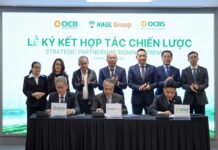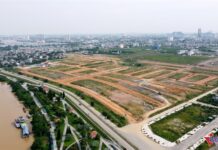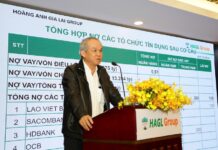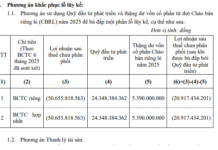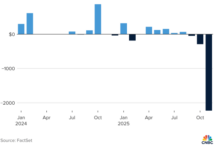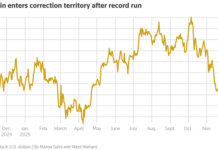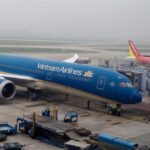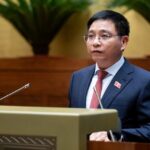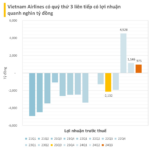The Double Impact Wipes Out Achievements
According to the International Air Transport Association (IATA), post-COVID-19, Vietnam ranks first among the 25 countries with the fastest-growing domestic aviation markets. The Vietnam Aviation Authority predicts that the country’s aviation market will fully recover to pre-pandemic levels by the end of this year, in line with the recovery trend in the Asia-Pacific region.
However, Vietnam’s aviation authorities acknowledge that the industry’s recovery faces significant challenges. The double impact of the COVID-19 pandemic in 2020 and the unfavorable geopolitical situation has stalled growth and left a heavy toll on global and Vietnamese aviation.

The Vietnamese aviation industry can achieve breakthrough growth by investing in civil aviation.
Le Hong Ha, CEO of Vietnam Airlines, reported that for the first nine months of this year, the company’s consolidated revenue reached nearly VND 85,500 billion, a 24.64% increase compared to the same period in 2023. Consolidated after-tax profit exceeded VND 6,263 billion, largely due to debt forgiveness for Pacific Airlines and improved operational efficiency.
However, Mr. Ha noted that the severe consequences of the COVID-19 pandemic, coupled with global economic and political uncertainties, present significant challenges. As of December 31, 2023, the accumulated losses of the parent company and consolidated financial statements were VND 32,522 billion and VND 41,057 billion, respectively, with negative equity of VND 8,378 billion and VND 17,026 billion, respectively.
“If we don’t quickly improve our financial capacity and implement more robust and decisive solutions to seize opportunities in the upcoming era of national growth, the national carrier risks insolvency and capital shortage. In the long run, this will weaken our ability to cope with risks, erode our competitiveness, and diminish our position in the Vietnamese and regional aviation markets,” said Mr. Ha.
Self-Rescue and State Lifeline
Mr. Le Hong Ha, CEO of Vietnam Airlines, shared that the airline has implemented various self-rescue measures under the Comprehensive Restructuring Plan for the 2021-2025 period. “From 2020 to 2023, Vietnam Airlines reduced and saved a total of VND 18,118 billion in expenses. We negotiated a rent reduction of over VND 16,000 billion from 2021 until the end of the lease and deferred rent payments from 2020 to 2026, totaling more than VND 8,300 billion. We also canceled or postponed the delivery of new aircraft to align with our business needs. Additionally, we restructured debts worth VND 6,140 billion to ease our financial burden,” he explained.
The CEO added that the company has meticulously reorganized its structure and workforce, saving VND 2,444 billion in labor costs. They have also sold and leased back aircraft and engines and divested capital from Cambodia Angkor Air, generating approximately VND 2,346 billion in cash flow and VND 634 billion in income.

Le Hong Ha, CEO of Vietnam Airlines (Photo: Nhan Dan Newspaper)
To overcome the current challenges, Mr. Ha emphasized the need for state support as the largest shareholder. Investing in Vietnam Airlines will enable the carrier to compete with international rivals and expand Vietnam’s presence on the global aviation map.
“It is particularly important to allow Vietnam Airlines to act as the investor for projects within the specialized aviation service complex at Long Thanh International Airport to ensure the airline has a base at Vietnam’s largest airport. This will enable us to fulfill crucial national tasks, such as military transportation, security, and special flights. It also aligns with the mission of Long Thanh International Airport…” Mr. Ha added.
Regarding the proposal to extend the refinancing loan under Resolution 135/2020/QH14, Mr. Ha explained that despite self-rescue measures and efforts to mobilize resources through divestment and equity issuance, the company’s financial situation has not fully recovered, making it challenging to repay the loan by 2024. Therefore, approval from the National Assembly to extend the loan is necessary to maintain stable operations and liquidity.
The national carrier also requested the government to submit to the National Assembly for permission to offer additional shares to existing shareholders to increase its charter capital. Based on careful calculations, Vietnam Airlines determined that it needs to raise approximately VND 22,000 billion by offering additional shares to existing shareholders.
The Role of State-Owned Enterprises as a Pillar
Recently, at a workshop organized by the Communist Party of Vietnam Journal, Mr. Nguyen Duc Kien, former head of the Prime Minister’s economic advisory group, cited information from IATA that, since the beginning of 2020, many countries have provided economic relief to rescue their national carriers. In these cases, the government acts as both a major shareholder and a market regulator.
As of August 2021, governments worldwide have provided approximately US$229.7 billion in support to the aviation industry in various forms. While these aid packages have prevented airlines from going bankrupt, their financial health remains fragile after more than two years of COVID-19. Debt has increased from US$430 billion at the end of 2019 to US$550 billion in 2020 and further to US$650 billion in 2021, creating significant financial pressure on airlines during the post-pandemic recovery phase.

Nguyen Duc Kien, former head of the Prime Minister’s economic advisory group (Photo: Giao Thong Newspaper)
In Vietnam, according to Mr. Kien, Vietnam Airlines is currently the government’s special tool for managing and regulating the aviation industry, in line with the orientation of the state-owned economy as a crucial material force for macroeconomic stabilization and economic development. State-owned enterprises (SOEs) are the tools of the state-owned economy.
“In the coming period, one of the key national projects to enhance Vietnam’s competitiveness is the Long Thanh Airport. Through investment in this critical project, the state, using SOEs as a tool, will create new production capacity for the economy and foster a competitive business environment in the aviation industry among enterprises with different ownership forms,” Mr. Kien stated.
However, Mr. Kien emphasized that Vietnam Airlines must develop a comprehensive restructuring plan and gradually transition to a holding company model, an upgrade from the current group or corporation model. This new model will compel SOEs to enhance their operational efficiency in a highly competitive environment, and the state will exercise its ownership rights like other private owners, instead of granting exclusive advantages to SOEs.

One of the key national projects to enhance Vietnam’s competitiveness is the Long Thanh International Airport. Image: ACV.
The former head of the Prime Minister’s economic advisory group also stressed that, along with the comprehensive restructuring, Vietnam Airlines should focus on developing two segments to cater to diverse market demands: low-cost aviation for short-haul flights and premium aviation targeting high-income passengers and businesses at overseas sales points.
The Twin Impacts’ Heavy Aftermath and Vietnam Airlines’ ‘Major Surgery’
The dual impact of the COVID-19 pandemic in 2020 and the unfavorable evolution of world geopolitical situations has halted the growth and left a heavy toll on global aviation, with Vietnam’s aviation industry being no exception. For Vietnam Airlines, the lack of a quick solution to improve its financial capacity may result in a potential loss of solvency and capital shortage.
Unlocking Vietnam Airlines’ Troubles: A Strategic Approach
On the afternoon of November 25, the National Assembly will hold a discussion on solutions to continue overcoming difficulties caused by the COVID-19 pandemic and enable Vietnam Airlines’ early recovery and sustainable development.
“Long Thanh Airport Project’s Phase 1: A Timeline Update”
The National Assembly’s Economic Committee agreed on the necessity to adjust the investment policy for the Long Thanh International Airport project. They approved the adjustment of the investment schedule for the construction of Runway 3, moving it from Phase 3 to Phase 1. This decision aims to ensure the synchronized operation of Runway 3 with Phase 1, and also extended the deadline for the completion of Phase 1 to December 31, 2026.






